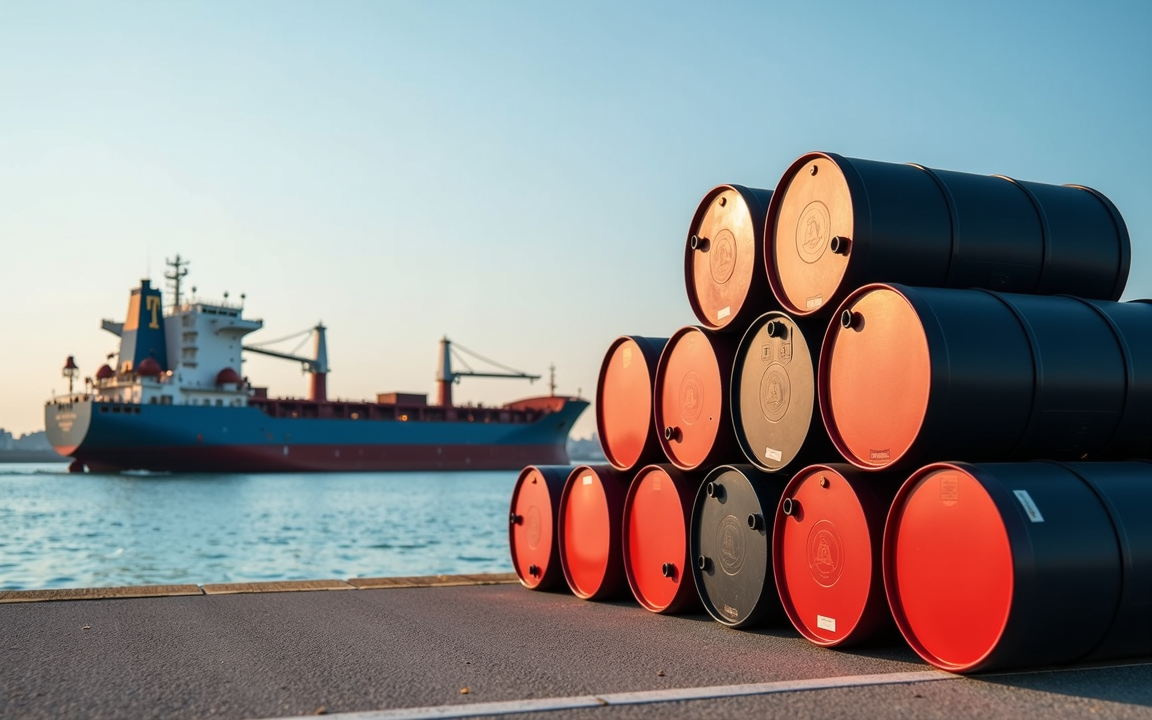The latest US sanctions on two of the largest Russian oil companies are likely to shake up the market.
This week, oil prices surged following the Trump administration’s announcement of sanctions targeting Russian oil producers, Rosneft and Lukoil.
These sanctions are the first directly imposed on Russia by the Donald Trump administration in its second term.
The US Department of the Treasury has implemented new measures with the aim of intensifying pressure on Russia’s energy sector.
These actions are designed to diminish the Kremlin’s financial capacity for its war efforts and to support its struggling economy.
“The latest sanctions on Russia’s two largest oil companies, Rosneft and Lukoil, resulted in Brent surging 6% in one day as traders and refiners scramble for alternative supplies,” Janiv Shah, vice president, commodities market at Rystad Energy, said in an emailed commentary.
Overall, we estimate that between 500,000–600,000 barrels per day (bpd) of Russian oil production is at risk of being curtailed.
Ongoing drone attacks on Russian refineries are likely to hasten production shutdowns, further reducing domestic crude demand.
The Organization of the Petroleum Exporting Countries and allies have already signalled their readiness to compensate for potential market losses during their meeting early next month.
Due to current sanctions, key Indian buyers of Russian crude, including Reliance Industries and other state-owned firms, intend to decrease their crude imports in the near future.
Rosneft and Lukoil supply
Lukoil and Rosneft collectively export an estimated 3 million bpd of crude oil and approximately 1 million bpd of refined products, according to Rystad Energy.
Rosneft’s crude oil exports are diverse, with about 800,000 bpd reaching China via the ESPO pipeline, through Kazakhstan, and from Russia’s Far Eastern ports.
Meanwhile, estimates from ING Group stated that Rosneft and Lukoil produce nearly 50% of Russia’s overall oil output.
“Rosneft and Lukoil produce more than a combined 5m b/d of crude oil, which is in the region of 50% of total Russian oil production, and so these sanctions have the potential to be very disruptive to the oil market,” Warren Patterson, head of commodities strategy at ING Group, said.
Lukoil has traditionally concentrated its crude oil shipments on the Western part of the country, with pipeline deliveries to the East being historically low.
“Consequently, around 2 million bpd of crude exported by Rosneft and Lukoil are shipped from Russia’s Western and Arctic ports mainly to Turkyie, India and China via maritime routes,” Rystad’s Shah said.
“India and Turkey are likely to cut imports from the current levels of nearly 2 million bpd, while evidence of Chinese state-owned companies cancelling Russian purchases will further support the buying of Middle Eastern medium sour grades.
Oil supply at risk
For the oil market, traders will monitor the impact of the latest US sanctions on overall supply.
According to ING’s estimates, Russia exports about 4.5 million bpd of crude oil and in the range of 2.5 million bpd of refined oil products. Out of the total exported refined products, 1 million bpd comprises diesel.
There are already clear signs of buyers looking for alternative grades.
“This is evident when looking at the Brent-Dubai spread, which has collapsed since the sanctions’ announcement (driven by strength in the Dubai benchmark),” Patterson said.
This year, China has been the primary purchaser of Russian crude oil, importing an average of 2 million bpd through both pipelines and vessels, according to ING’s estimates.
India’s imports of Russian crude have also been significant, averaging over 1.5 million bpd during the same period.
The oil market’s primary attention will be on the significant volumes of oil directed towards China and India, Patterson said.
Reports indicate that Indian refiners are actively seeking alternative oil grades from the Middle East.
There will be an element of scepticism over how effective these sanctions will be.
Since 2022, Russia has demonstrated its ability to maintain oil flows despite sanctions and embargoes.
The price action observed since the sanctions were announced—with Brent rising just over 5% on the day they were issued—appears to reflect these doubts.
Market outlook
Russia continues to find buyers for its oil, with seaborne crude oil exports remaining high.
Bloomberg data indicated that Russia exported 3.7 million bpd in the most recent reporting week.
“One factor likely playing a role here is that Ukrainian drone attacks on Russian oil refineries mean that less crude oil can currently be processed in Russia, leaving larger quantities available for export,” Carsten Fritsch, commodity analyst at Commerzbank AG, said in a report.
The drone attacks on Russian energy infrastructure have also meant that oil production in Kazakhstan has had to be reduced in recent days.
Prior to the latest US sanctions, ING held a bearish view on the market, expecting Brent to average $57 per barrel over 2026, with prices weighed down by the scale of the surplus set to hit the market.
ING is holding back from making any revisions to its forecasts until there is more clarity on exactly what the impact of these sanctions will be on oil flows.
“In addition, if we start seeing Russian flows becoming increasingly disrupted, we could see a scenario where Brent trades up to the $70-75/bbl range, assuming we lose in the region of 1.5m b/d of Russian supply (essentially all supply to India),” Patterson said.
Much will also depend on how other OPEC+ members respond.
The post Analysis: how latest US sanctions may put significant amount of Russian oil supply at risk appeared first on Invezz

